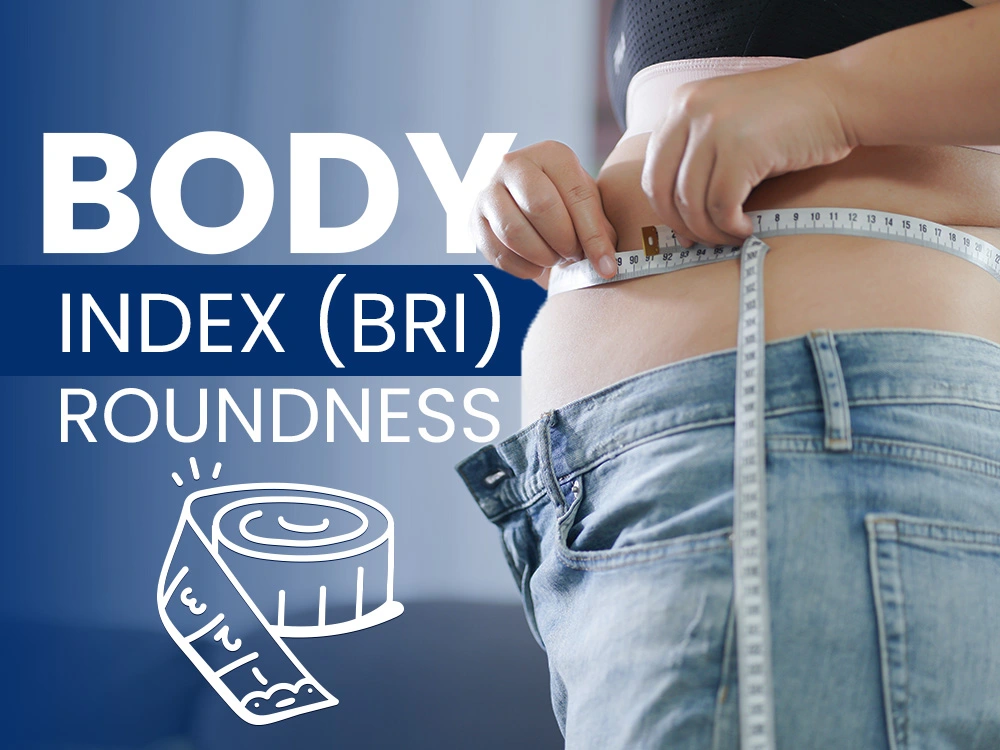
The Body Roundness Index (BRI) is a relatively new measure used to assess body shape and its implications for health. Unlike traditional methods that primarily focus on weight or simple ratios, BRI provides a deeper insight into the distribution of body fat, which is crucial for understanding an individual’s health profile. In this article, we will explore the intricacies of BRI, its differences from Body Mass Index (BMI), its calculation methods, interpretation of results, and its significance in predicting disease risks.
Understanding the Concept of Body Roundness Index
The Body Roundness Index is designed to offer a more comprehensive view of body fat distribution than conventional measurements. It emphasizes how body shape, particularly roundness, correlates with health risks. BRI aims to reflect the tendency of fat accumulation in the body, particularly in the abdominal area, which is closely associated with metabolic disorders.
The approach is rooted in geometry, where measurements of circumference are compared to height. This allows for a more standardized understanding of how body shape impacts health. BRI specifically highlights risks that might not be uncovered by standard weight-based measurements.
The Mathematical Formula Behind Body Roundness Index
The formula for calculating the Body Roundness Index (BRI) is straightforward yet effective. BRI is calculated using measurements of waist circumference and height, integrated into a specific formula developed for this purpose:
BRI = (Waist circumference / Height) × (1 + (Waist circumference / Height))
This formula allows healthcare professionals to assess body shape quantitatively, creating a more nuanced picture of an individual’s health status compared to BMI or waist-to-height ratios alone.
The Importance of BRI in Health Assessment
The increase in obesity rates worldwide has necessitated better tools for assessing health risks associated with body composition. Unlike BMI, which can misclassify muscular individuals as overweight or obese, BRI takes a more holistic view. By focusing on body roundness, it can provide clearer insights into metabolic health and associated risks.
Moreover, BRI has gained traction in clinical settings, where it can aid in identifying patients who may benefit from lifestyle changes or medical interventions. This index helps to initiate conversations around weight management and disease prevention in a sensitive yet informative manner.
The Difference Between BRI and BMI
While Body Mass Index (BMI) has been a popular measure for assessing body weight in relation to height, it has its limitations. BMI”s focus solely on weight can lead to misleading assessments, particularly in athletes or individuals with higher muscle mass.
In contrast, BRI integrates body shape into the health assessment. This distinction is crucial since similar BMI scores can mask significant differences in fat distribution, which is inherently more indicative of health status.
The Limitations of BMI
The primary limitation of BMI is that it does not differentiate between fat mass and lean body mass. For example, an athlete may have a high BMI due to greater muscle mass, while simultaneously possessing a healthy body fat percentage.
Additionally, BMI lacks the ability to reflect fat distribution, particularly visceral fat, which accumulates around the abdominal organs and poses various health risks. This shortcoming underscores the growing preference for more nuanced measures like BRI.
Why Body Roundness Index Might Be a Better Indicator
BRI’s focus on body shape allows for a more accurate assessment of health risks. Research suggests that body roundness is more closely linked to metabolic syndrome, cardiovascular diseases, and other obesity-related conditions than BMI. Understanding these correlations makes BRI a potentially better indicator for preventive healthcare strategies.
Furthermore, BRI has demonstrated capacity in research settings to predict long-term health outcomes more reliably, allowing health professionals to tailor their guidance more effectively toward individual needs.
How to Calculate Your Body Roundness Index
Calculating your Body Roundness Index is an accessible process that requires minimal tools. The accurate measurement of waist circumference and height is paramount for correct analysis.
Tools Needed for BRI Calculation
* Measuring tape for waist circumference
* Stadiometer or wall-mounted tape measure for height
* Calculator for performing the BRI formula
These tools can often be found at healthcare facilities, fitness centers, or even at home, making the measurement process straightforward.
Step-by-Step Guide to BRI Calculation
- Measure your waist circumference at the level of the navel, ensuring that the tape is snug but not compressing the skin.
- Measure your height without shoes, standing straight against a wall.
- Input your waist circumference and height into the BRI formula to calculate your score.
By following these steps accurately, individuals can gain insights into their body shape and health risks associated with it.
Interpreting Your Body Roundness Index Results
Once you have calculated your Body Roundness Index, understanding the implications of your score is essential. These results can provide valuable insights into your health risk profile.
What Does Your BRI Score Mean?
BRI scores typically categorize individuals into healthy, borderline, and unhealthy ranges. A lower score generally indicates a more favorable body shape correlated with lower health risks.
Conversely, higher scores may necessitate further evaluation of factors such as diet, physical activity, and healthcare interventions. Thus, interpreting these numbers should be done in consultation with a healthcare provider.
Healthy vs Unhealthy BRI Scores
Generally, a BRI score below 3.5 is considered healthy, while scores above this threshold indicate potential health risks. It’s important to consider these scores as part of a broader health evaluation, including other risk factors.
Healthcare providers often recommend proactive steps for individuals with higher BRI scores, such as lifestyle modifications and targeted health screenings.
The Role of BRI in Disease Risk Prediction
Understanding BRI’s role in predicting diseases is paramount. This index not only aids in personal health assessments but also provides insights into population health trends.
BRI and Cardiovascular Diseases
Intervention strategies that address roundness can substantially aid in reducing cardiovascular risk, making BRI a critical indicator in this area.
Body Roundness Index and Diabetes Risk
There are strong correlations between body roundness and diabetes risk levels. Elevated BRI scores have been linked to insulin resistance, a precursor to type 2 diabetes. Monitoring BRI can help identify individuals who may benefit from preventive measures, enhancing early intervention efforts.
In conclusion, the Body Roundness Index represents a significant advancement in body composition assessment, offering a nuanced understanding of health risks associated with body shape. As awareness of BRI grows, so too will its role in fostering better health outcomes across populations.





